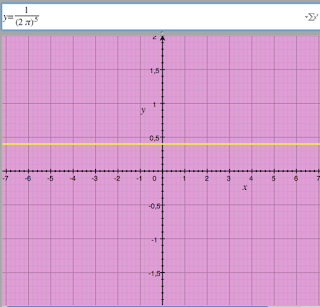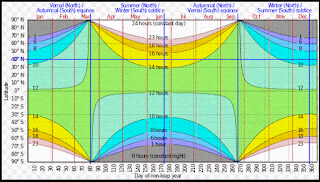Wednesday, December 30, 2015
Tuesday, December 29, 2015
Omegas
source: Le Figaro.fr santé
author: Juliette Camuzard
translation: doxa-louise
WHY THE BRAIN SHOULD NOT BE DEPRIVED OF FATS
The brain not only runs on glucose. It also needs fats and, in particular, those infamous polyunsaturated
fatty acids.
The brain is the most energy-hungry organ; it represents a mere 2% of total weight ( for a 60 kg person),
yet its basal metabolism consumes some 20% of the calories we consume. For the most part glucose,
but other nutritional elements are essential, and particularly fats.
The latter serve as an energy substratum in situations where sugar reserves are lacking,‘fatty acids are
then transformed into compounds that nerve cells can use for energy’, explains Sophie Layé, research
director for l’Institut national de la recherche agronomique (Inra) and director for NutriNeuro labs, at
Bordeaux. But their primary function in the brain, is to first serve as the building blocks for the cells which
form the brain: 60% of its dry matter is made up of fat. ‘The membranes of neurons and glial cells,
which play a role of support and protection of nervous tissue, are made up of fats. As is myelin, this sheath
which isolates nervous fibers, and enables the passage of the nervous message’, adds the specialist.
A balance of omegas
Certain fats are more important than others for brain functionning. This is true for the omega-3s and
the omega-6s. These polyunsatured fatty acids account for approximately 30% of brain fats and are
concentrated in the nerve endings. The organism cannot itself produce these, so the brain finds them
in the foods ingested: colza oil, nuts or fatty fish for omega-3, sunflower, corn oil and animal products
for the omega-6. ‘These fatty acids and their derivatives are part of a number of processes such as
neurotransmission, cell survival, neuroinflammation and, as a consequence, affect mood and cognition’,
elaborates Sophie Layé. They add flexibility to neuron membranes, which means a better transmission
of the nervous impulse. The omega-6, particularly important in the make-up of the cell membrane, have
in turn anti-inflammatory properties.
But one shoud not neglect the omega-3/omega-6 proportion, which should respect a one to four ratio. I
f not, excessive omega-6 becomes a lack of omega-3. This situation is rather frequent, in fact: ‘In France,
the proportion is more like one for twenty’, laments the specialist.
Olive oil and avocados
Could a lack or unbalance in one of these acids affect the brain. It is a hypotheses for many researchers.
‘Many studies have shown, that there exists a very strong link in man between an insufficient intake of
omega-3s and the incidence of neurological illnesses with an inflammatory aspect, such as Alzheimer’s,
Parkinson’s, or again certain types of depression. Indeed, animals deprived of omega-3s will develop
anxious behaviours, depression, memory difficulties, etc.’, adds Sophie Layé.
What to eat to nourish the brain
Other than essential fatty acids, the brain also needs omega-9s, known as oleic acid. One finds these
in prominently in olive oil and avocados. Their direct effects on neurons are not as well known, but are
starting to be understood, notably the protective role of olive oil to combat cognitive decline. Finally, the
brain needs cholesterol, this major component of cellular membranes.
This we know, fats play a role of messenger between brain cells and are useful to the absorption of
certain vitamins. Given bad press because of their nefarious role in the development of cardiovascular
diseases, they should never be dismissed out of hand; for essential needs, an adult male should be
getting every day 2,7 grams of omega-3 and 9 grams of omega-6. An adequate intake is absolutely
essential for the optimal operation of the brain and the maintenance of brain function with age. Inversely,
deficits in polyinsaturated fatty acids weaken the neurobiological processes involved in memory and mood.
Friday, December 25, 2015
Thursday, December 24, 2015
Best Practices
The previous post is a best practices SVG animation, as presented by MSoft.
It works with great economy of means. One creates a transformObject which is
appended to the rotating gear. This is what allows one to introduce complexity.
It works with great economy of means. One creates a transformObject which is
appended to the rotating gear. This is what allows one to introduce complexity.
The genius of SVG is that figures are recognized as such (unlike the canvas, where one needs to ask the context to redraw elements explicitly). Canvas elements are basically raster constructs, whereas SVG shapes are vectorial. Animating on the canvas can be laborious for the developer. Experienced developers recommended it when one has many objects to move at the same time, where it will be faster than SVG.
Wednesday, December 23, 2015
Vascularization
One of the distressing things about aging is that one comes to loose fat in places
one doesn't want to, like around the eyes. Trying to put on eye make-up is then
like trying to paint a flower on a towel. But enough about me; I did come across a
fascinating article about fat and the human body.
Body-builders, aiming for as little body fat as possible, end up having to cope with
vascularization, the appearance of veins right under the skin. Makes sense; fat is
normally what hides veins from sight. It also brings home the difference between
body-building and strength training. The fellow puling a bus needs not only muscle
but fat, to keep the muscle stoked. Perhaps the Sumo wrestler is the ultimage case of this.
Of course, the middle-aged will have more body fat around organs, and one needs
to accept this as inevitable. One can use an impedance scale to measure the evolution
over time - or training - of one's bf percentage, although such home scales say very
little between individuals.
There is a difference between men and women because the later have fat for breast
tissue and around the uterus:
http://athletictraining.fr/photos-pourcentage-de-graisse-des-hommes-et-femmes/
one doesn't want to, like around the eyes. Trying to put on eye make-up is then
like trying to paint a flower on a towel. But enough about me; I did come across a
fascinating article about fat and the human body.
Body-builders, aiming for as little body fat as possible, end up having to cope with
vascularization, the appearance of veins right under the skin. Makes sense; fat is
normally what hides veins from sight. It also brings home the difference between
body-building and strength training. The fellow puling a bus needs not only muscle
but fat, to keep the muscle stoked. Perhaps the Sumo wrestler is the ultimage case of this.
Of course, the middle-aged will have more body fat around organs, and one needs
to accept this as inevitable. One can use an impedance scale to measure the evolution
over time - or training - of one's bf percentage, although such home scales say very
little between individuals.
There is a difference between men and women because the later have fat for breast
tissue and around the uterus:
http://athletictraining.fr/photos-pourcentage-de-graisse-des-hommes-et-femmes/
Sunday, December 20, 2015
Saturday, December 19, 2015
Wednesday, December 16, 2015
Convenience
How to say it: the 65.5 inch average female from the previous post might belong to a particular affluent demographic. Certainly the large influx of Latino women into the US population is shorter than that. Why mention it? Actually the issue is of some importance to the clothing industry. No one dresses all women, but individual brands have to know their clientèle.
Although, increasingly, the move within fashion is toward Fall-Where-They-May clothes, not altogether an aesthetic, but also a convenience for the industry.
And then there is the age question. Who cares? Below, a picture I took for my December 8 birthday. I am not a young woman, but I do not particularly signal age with my clothes. I dress for comfort although, to this day, I feel dressed down if I am not in a proper dress. And I rarely wore pants to the office. To put it succinctly, one dresses more modestly with age.
Although, increasingly, the move within fashion is toward Fall-Where-They-May clothes, not altogether an aesthetic, but also a convenience for the industry.
And then there is the age question. Who cares? Below, a picture I took for my December 8 birthday. I am not a young woman, but I do not particularly signal age with my clothes. I dress for comfort although, to this day, I feel dressed down if I am not in a proper dress. And I rarely wore pants to the office. To put it succinctly, one dresses more modestly with age.
Tuesday, December 15, 2015
Pancakes
Made six Aunt Jemima pancakes yesterday and froze five. Each will make a meal,after
a turn in the toaster and the addition of various toppings. Used a lot of oil for frying, and mixed with an electric mixer (no lumps). Pretty happy with the results.
Kh
a turn in the toaster and the addition of various toppings. Used a lot of oil for frying, and mixed with an electric mixer (no lumps). Pretty happy with the results.
Kh
Normal Example
A function that uses x as the independent variable and one that uses e^x are not
the same thing.That is because e itself is a function of sorts, the product of (1 + 1/n)^n
for a very large n. It is an irrational number (the decimal roll-out has no end, and
a transcendent number (like pi) with no geometrically stable analog ( any sufficiently
large n will generate a good chunk of it). It isparticularly useful just for this reason:
one can use it to the precision that one needs.
In the case of the normal density function, what does x mean. The expression in e
will take on different values as one moves on the x-axis, and that is the independent
variable. But taking a concrete example, as below, it is where one finds oneself on
the x-axis, and thus with respect to standard variation, that is informative.
Stanford gives the Example of the average height of women in the US. It can be
assumed to be normally distributed around a mean. The mean is 65.5 inches and
the standard deviation is at 2.5 inches plus or minus. That is to say, a majority of
women are between 63 and 68 inches.
One can create a graph with the more elaborate formula, specifying sigma at plus
or minus 2.5. And indeed, 68% of the area will show up between these values.
http://statweb.stanford.edu/~naras/jsm/NormalDensity/NormalDensity.html
the same thing.That is because e itself is a function of sorts, the product of (1 + 1/n)^n
for a very large n. It is an irrational number (the decimal roll-out has no end, and
a transcendent number (like pi) with no geometrically stable analog ( any sufficiently
large n will generate a good chunk of it). It isparticularly useful just for this reason:
one can use it to the precision that one needs.
In the case of the normal density function, what does x mean. The expression in e
will take on different values as one moves on the x-axis, and that is the independent
variable. But taking a concrete example, as below, it is where one finds oneself on
the x-axis, and thus with respect to standard variation, that is informative.
Stanford gives the Example of the average height of women in the US. It can be
assumed to be normally distributed around a mean. The mean is 65.5 inches and
the standard deviation is at 2.5 inches plus or minus. That is to say, a majority of
women are between 63 and 68 inches.
One can create a graph with the more elaborate formula, specifying sigma at plus
or minus 2.5. And indeed, 68% of the area will show up between these values.
(Wolfram on-line definite integration calculator)
Monday, December 14, 2015
GNormal
The fact is well-known: the below formula and accompanying curve represent, in mathematics, the random distribution of probabilities or, in statistics, that of errors. All very nice, but what does that mean.
I cannot imagine a path of reasoning that would lead me to the median x at approximately 40%. With either an even or odd number of events, one is always dealing with 50-50 odds. Where does this number come from.
Looking at the simplest version of the formula - with the median at 0, and the standard deviation at 1(standard normal) - the coefficient of the function yields this .4. In effect, the probability of hitting the median position as such is 0. Every position is to be considered as a between of two others. In that world, one approximates the .4 at every turn. But why .4?
The quick answer: Pythagoras. the distance between two points is a square root, here of the full circle at 2 pi.The e part of the formula flips a classic exponential curve into a bell shape. (e is in fact necessary to avoid an asymptote at x=0). This function is a density representation. We half it and show positive and negative x.
I cannot imagine a path of reasoning that would lead me to the median x at approximately 40%. With either an even or odd number of events, one is always dealing with 50-50 odds. Where does this number come from.
Looking at the simplest version of the formula - with the median at 0, and the standard deviation at 1(standard normal) - the coefficient of the function yields this .4. In effect, the probability of hitting the median position as such is 0. Every position is to be considered as a between of two others. In that world, one approximates the .4 at every turn. But why .4?
The quick answer: Pythagoras. the distance between two points is a square root, here of the full circle at 2 pi.The e part of the formula flips a classic exponential curve into a bell shape. (e is in fact necessary to avoid an asymptote at x=0). This function is a density representation. We half it and show positive and negative x.
Sunday, December 13, 2015
Loving e
I think I have finally come to terms with e, the base for the natural logarithm. It is a very useful thing. Looking through various help in math sites, I came across the below entry into the matter, to the effect that - historically - the invention of e became necessary in the on-going work in calculus as one tried to define integrations as the opposite of derivations ie that one could find the distance covered by a moving element as a non-constant speed by adding the little bits ie integration. Newton (1642-1726) does come before Euler (1707-1783)!
In effect, the fundamental theorem of calculus does posit that derivation and integration are opposites. The notion of primitive is a delicate one. one has to be aware of the difference between a free variable (for which one could sub a constant), a bound variable, and a silent one (place-holder), distinctions which came recently in mathematics.
If logarithms made calculations easy for times before the invention of the calculator, one can still appreciate it today as the bridge to those darn values that don't turn out evenly in calculation. Below,
e to power .25 does come back to itself if the value is multiplied by itself three times!!
Thursday, December 10, 2015
Wednesday, December 9, 2015
Saturday, December 5, 2015
New Version
Click to see the time and day status in other location (2016-01-01).
MONTREAL:
8:47 hours of daylight.
LOS ANGELES:
9:56 hours of daylight.
Friday, December 4, 2015
Wednesday, December 2, 2015
Travel Time
Here's one for math lovers. The below map shows the number of daylight hours one
can expect given one's location.
For the actual numbers, I've found a Web Site one can consult. It tells me that, for
today, Montreal will experience 8:56 hours of daylight (actually, grey). It will be
8:32 for Paris, and 8:09 for London. Jakarta, Indonesia (close to the equator) will
be getting 12:27.
http://jan.moesen.nu/daylight-calculator/
It would be nice to have a little app for travellers!?
can expect given one's location.
source: see 'Sunrise Equation' on Wikipedia
For the actual numbers, I've found a Web Site one can consult. It tells me that, for
today, Montreal will experience 8:56 hours of daylight (actually, grey). It will be
8:32 for Paris, and 8:09 for London. Jakarta, Indonesia (close to the equator) will
be getting 12:27.
http://jan.moesen.nu/daylight-calculator/
It would be nice to have a little app for travellers!?
Tuesday, December 1, 2015
Subscribe to:
Comments (Atom)










































